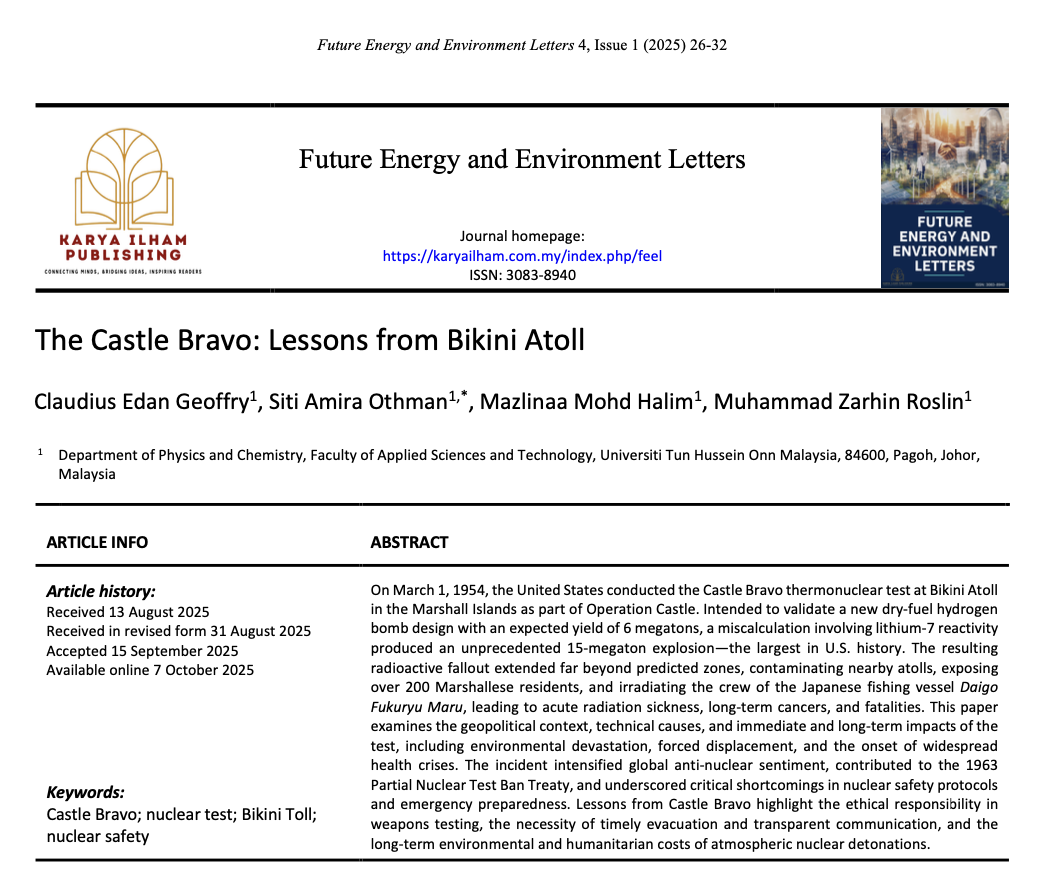The Castle Bravo: Lessons from Bikini Atoll
Keywords:
Castle Bravo, nuclear test, Bikini Toll, nuclear safetyAbstract
On March 1, 1954, the United States conducted the Castle Bravo thermonuclear test at Bikini Atoll in the Marshall Islands as part of Operation Castle. Intended to validate a new dry-fuel hydrogen bomb design with an expected yield of 6 megatons, a miscalculation involving lithium-7 reactivity produced an unprecedented 15-megaton explosion—the largest in U.S. history. The resulting radioactive fallout extended far beyond predicted zones, contaminating nearby atolls, exposing over 200 Marshallese residents, and irradiating the crew of the Japanese fishing vessel Daigo Fukuryu Maru, leading to acute radiation sickness, long-term cancers, and fatalities. This paper examines the geopolitical context, technical causes, and immediate and long-term impacts of the test, including environmental devastation, forced displacement, and the onset of widespread health crises. The incident intensified global anti-nuclear sentiment, contributed to the 1963 Partial Nuclear Test Ban Treaty, and underscored critical shortcomings in nuclear safety protocols and emergency preparedness. Lessons from Castle Bravo highlight the ethical responsibility in weapons testing, the necessity of timely evacuation and transparent communication, and the long-term environmental and humanitarian costs of atmospheric nuclear detonations.







